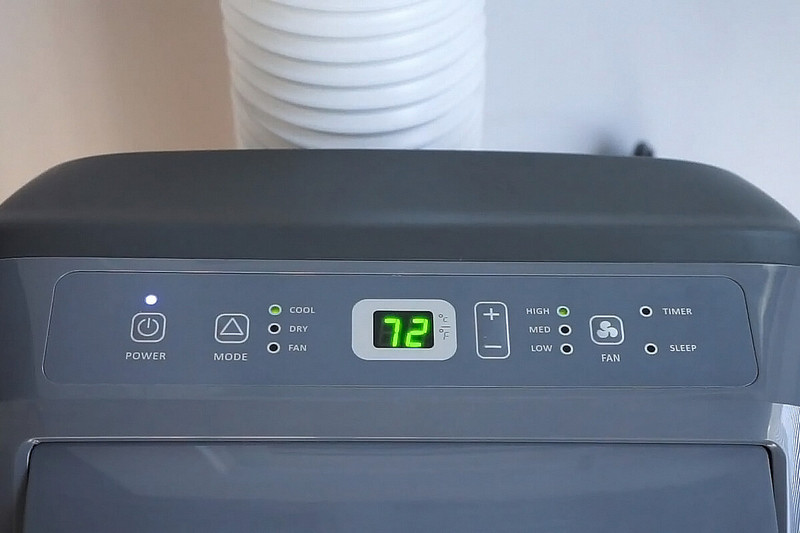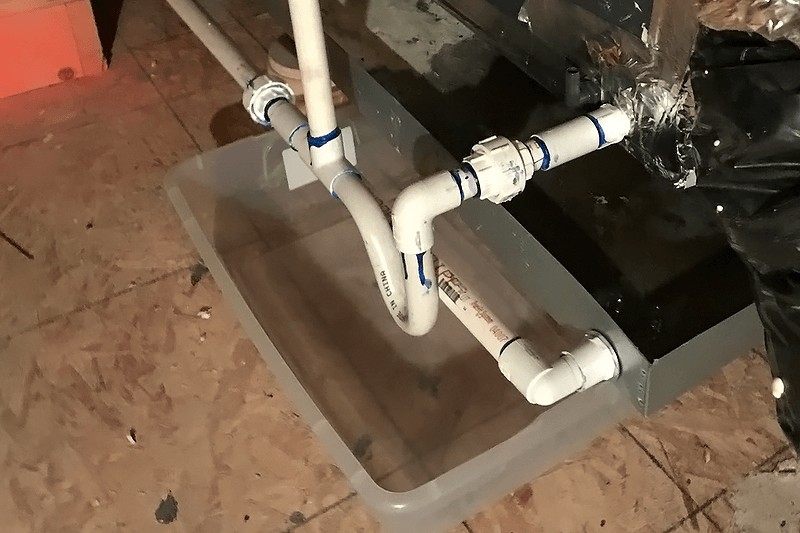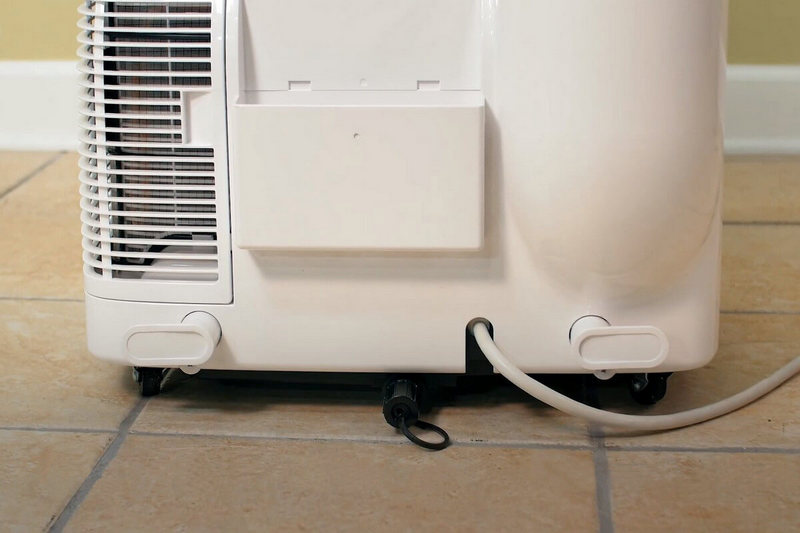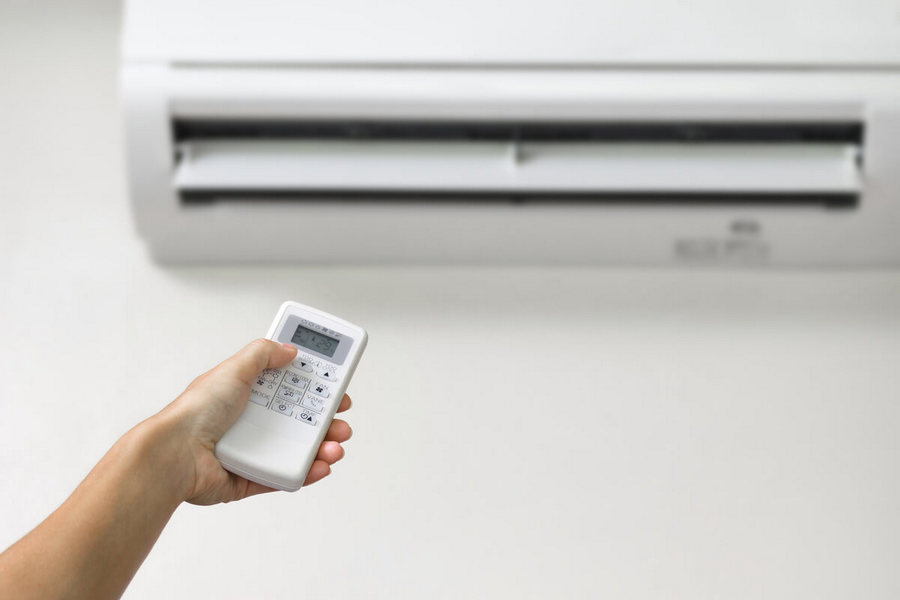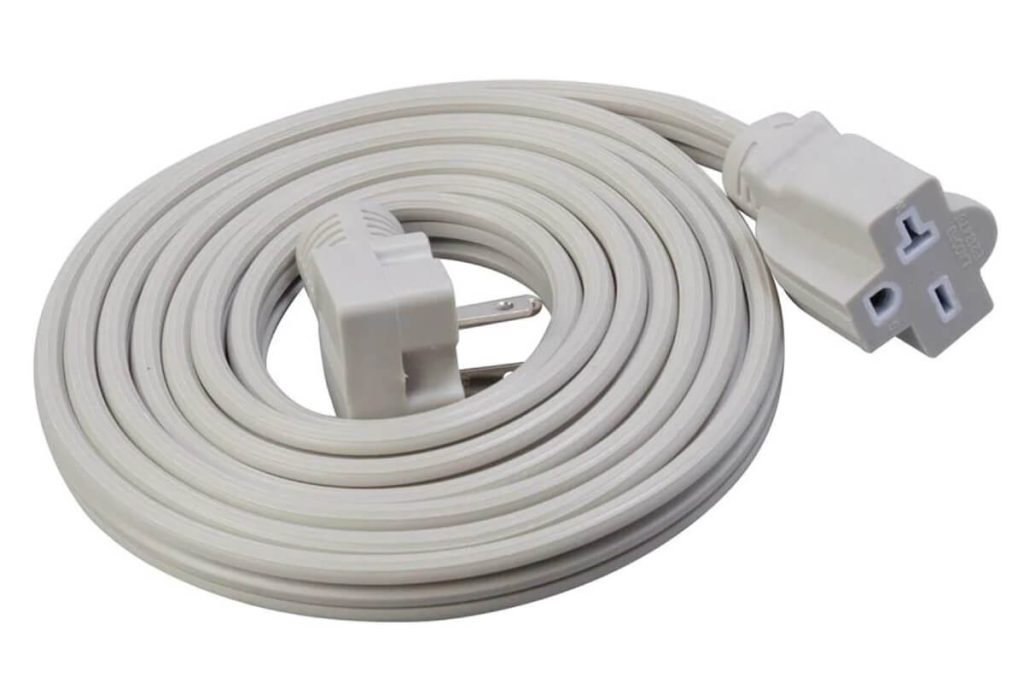It’s quite convenient to have a portable air conditioner during those hot summer months.
You can roll the portable AC anywhere in the house, such as the kitchen, bedroom, or living room.
However, if you notice that the portable AC is not cooling the room effectively, there are a few steps you can take to diagnose and possibly repair the problem.
Most Common Causes of a Portable AC Not Blowing Cold Air
A portable air conditioner not blowing cold air can be due to a lot of factors. Moreover, these types of cooling systems can break down much faster than your traditional air conditioners, including window units or central air systems.
How can you repair your portable AC unit when it’s not cooling? The first step is to clean or replace the air filter. Many times, air filters can become quite dirty and even block cool air from flowing smoothly. Air filters for portable units are easy to clean. However, if the air filter is torn or old, it would be better to replace it altogether.
Another thing you can do is check the mode setting. Make sure that you have it set to the right mode. When it comes to portable units, you will only have three or four modes, which can include:
- Cool
- Dry Mode
- Fan
- Auto
Read Also: 14000 BTU Portable Air Conditioner Reviews
Check Exhaust Line Issues
Besides some of the simplest fixes you can make, you may have to consider other portable air conditioner repairs that could take more work.
The first one will include venting the exhaust line. The portable AC unit needs to vent hot air properly to cool your room. If your portable air conditioner is running and blowing cold air but not cooling the room, the cause can be a faulty exhaust hose. Your exhaust line could have a leak somewhere that is just returning the hot air back into your room.
You can check this problem by going outside and checking the vent to make sure hot air is blowing out. If you can’t find a leak, you could also have an obstruction somewhere in the exhaust hose. This could be in the form of dust and debris that could’ve collected with time. You can blow out the debris with some sort of vacuum or by using compressed air. This will create enough air pressure to clear out any type of blockage.
Check the Condensate Tank
Another problem that can cause your air conditioner not to cool is a clog in the drainage line.
Every AC unit needs a drainage line to drain condensate buildup. You could also have a condensate tank if you have a portable AC unit. In this case, you could start seeing water dripping from the cooling system into your home. This can be inconvenient because the water can begin to seep into the floors, which can result in rotting wood.
If you do have a condensate tank, you can empty the tank outside of your home. However, make sure that you completely turn off and unplug your portable air conditioning unit before emptying the tank.
Next, get a container that can hold the water coming out of the tank. You can empty out the water by placing the portable AC unit on a leveled surface, such as a table. Simply drain the spout over the edge and into the container. Ideally, invest in a container that can hold at least 1 liter of water. Those who have a condensate pan can simply remove the pan from the bottom of the unit to empty it out.
Related: Why Is My Portable AC Producing So Much Water
Fixing Drainage Line Clogs in Your Portable Air Conditioner
A portable air conditioner not blowing cold air can also indicate an issue with the drainage line. Although most portable units will have a tank or a condensate pan, some could also have a drainage pipe.
If your line has a clog or is not draining properly, your AC could stop cooling. You may even start getting frozen coils within the system.
The best way to fix this is to shut off your portable AC unit to find the drainage line. You can flush out the obstruction with a water hose if you can disconnect the line from the portable unit. You can also take a vacuum to suck out any debris you could have in the drainage pipe.
Take a thin brush and push it into the drain line to loosen any hard debris lodged inside. Next, turn your vacuum on to suck out loosened debris inside the line. Choosing any of these two methods should work to repair your drainage line.
Related: How to Remove Water from a Portable Air Conditioner
Troubleshooting the Blower Fan
If you have little to no airflow coming out of the portable air conditioning unit, you could have an issue with your blower fan.
When this happens, make sure to check the fan itself along with the fan motor. First, switch the speeds of the fan from low to high in order to see if this makes a difference. If not, you can clean fan blades to ensure they are not being obstructed by dust.
However, remember to unplug the air conditioning unit every time you work with its components. Moreover, make sure to consult the instructions if you need to disassemble any parts. Tools you may need could include a screwdriver or a damp cloth.
Frozen Coils and Refrigerant Leaks
Frozen coils can be the result of a few things. One of the first things to check is the air filter. A dirty air filter could be blocking airflow, which could cause a frozen coil and impede the cold air from flowing.
The coil itself could also be dirty or even have rust within the coil system. This could hinder its ability to exchange heat and transport cold air into your home. Hence, the cold will stay trapped in the coils and freeze with time.
Finally, you may have a refrigerant leak somewhere in the line. A refrigerant leak is best handled by a licensed HVAC technician. However, in the end, investing in a new portable AC unit would be more cost-effective compared to repairing the refrigerant leak.

